Mocked for his birthmark, he took nearly 40 years before being able to say: “It has shaped me for the better”
TRIGGER WARNING: This story makes mention of suicide ideation, which some may find distressing.
by Christine Leow // March 30, 2023, 11:15 pm
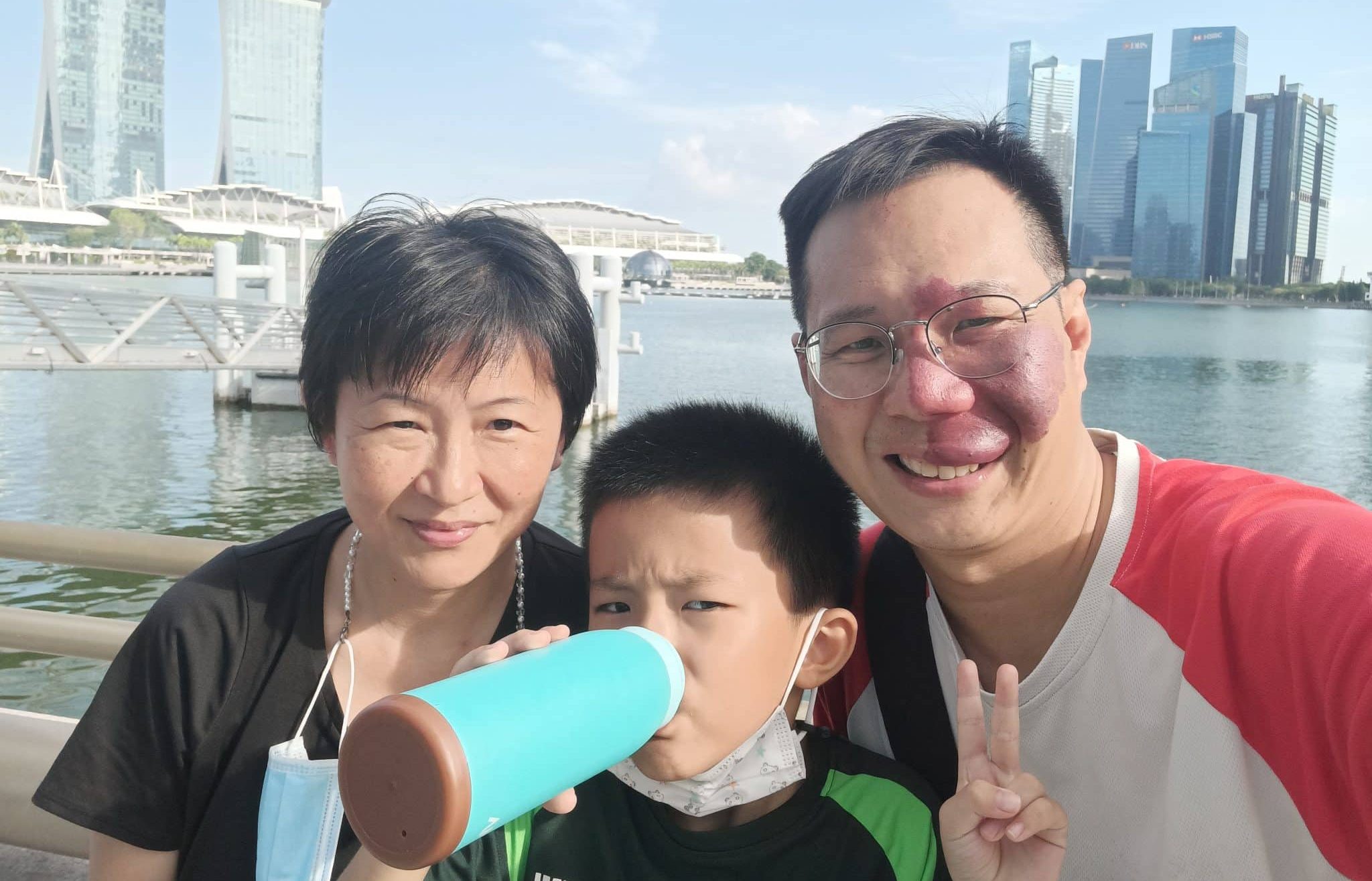
Timothy Wong with his wife Kim Geok and son. All photos courtesy of Timothy Wong.
Timothy Wong shares his story clearly and calmly, glad that there has been some closure but careful not to seem as if he has already “made it”. His is a tale with “a lot of baggage” that he is still working to resolve.
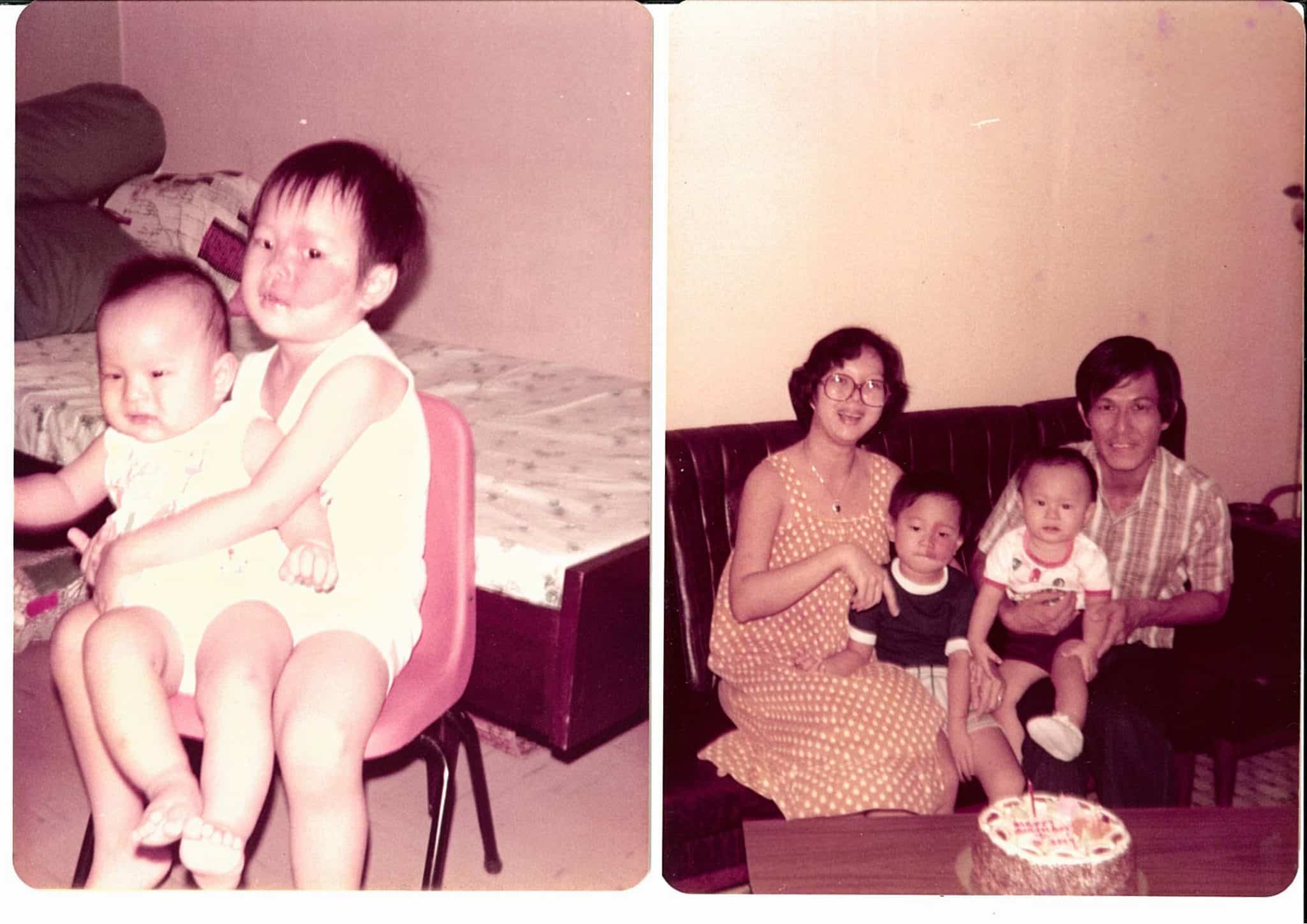
Timothy had a happy childhood. His parents treated him normally and never talked about his birthmark.
“I’ve looked back with a lot of regret. I’ve let people down in the past. I did go back to make things right with some.
“Grace was shown to me. After the way I left some things, it was more than I deserve. But I can’t keep beating myself up over the past. I just want to share my journey,” the 48-year-old tells Salt&Light.
It has indeed been a journey and it began in his childhood.
Marked for life
Timothy was born with a wine-coloured stain that covers almost half of his face. In his early years, it did not bother him. His was a happy childhood by all accounts.
“In kindergarten, I was very carefree. I could mix with everyone. My parents didn’t talk about my birthmark. They treated me as normal.”
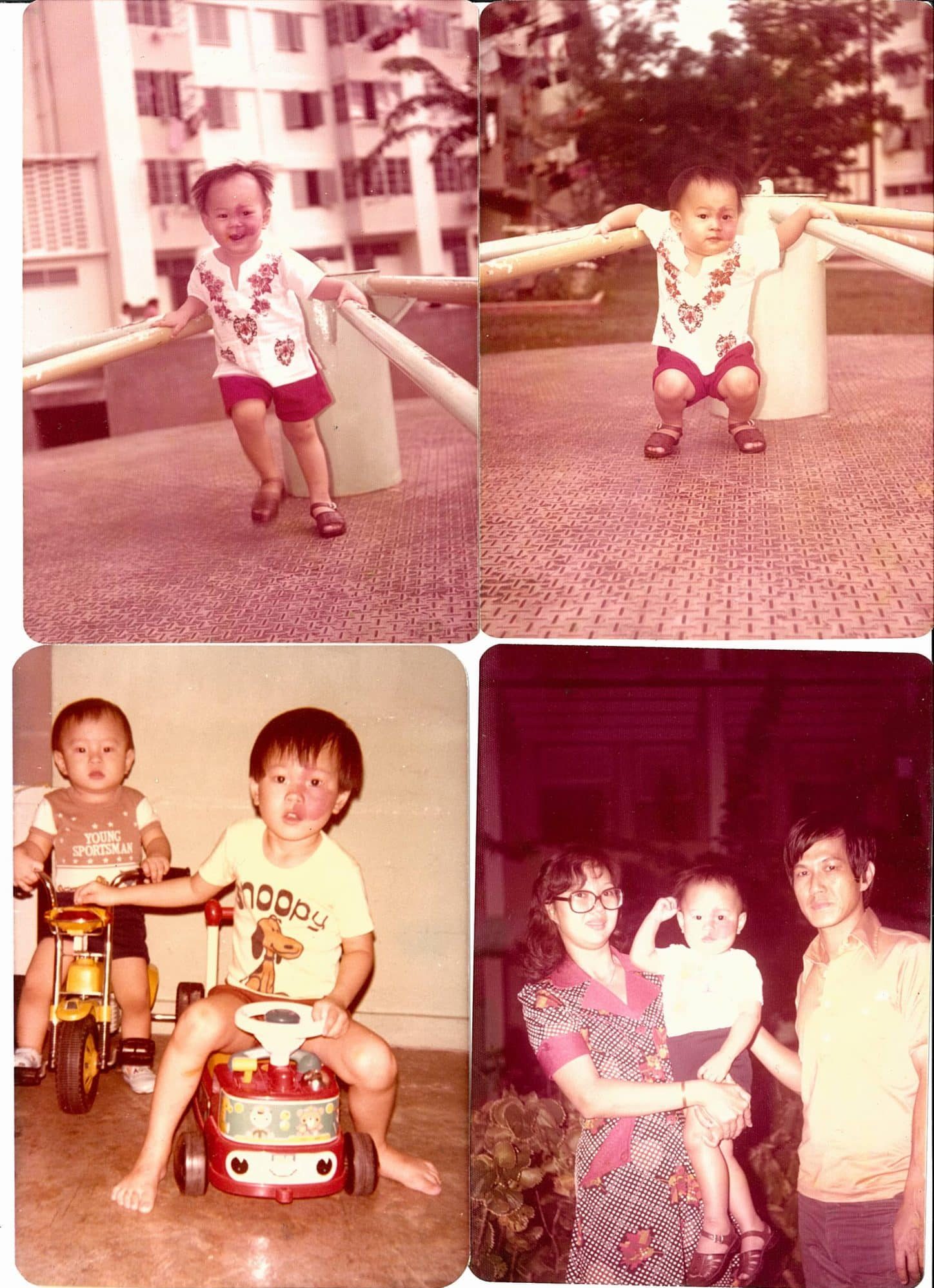
Reality hit hard in primary school when his classmates mocked him for his facial birthmark.
In primary school, though, he soon learnt that others did not consider him “normal”. He was stared at like “some kind of alien”, called names and ostracised.
“My parents didn’t talk about my birthmark. They treated me as normal.”
“People would point at me and say, ‘Eee!’”
Raised in a Catholic family, Timothy would pray for God to remove the red birthmark across his face. His prayers were not answered.
For Timothy, the port wine stain, as his type of birthmark is called, also presented some medical issues as he moved into his 30s. Caused by the abnormal formation of tiny blood vessels in the skin, the patch of skin thickened over time because of soft tissue hypertrophy.
“My left nostril is a bit blocked because of it. So I do have some issues with sleep apnea.
“Because it also has to do with the nerves, I have some issues with energy level and concentration. But it’s mild compared to what others with birthmarks may have,” he adds.
“There is more to life than this”
When Timothy was 12, he aced his PSLE; he was tutored by his mother who was a teacher. He became a sort of “minor celebrity” amongst family and friends. Once ridiculed for the way he looked, he now revelled in all the praises.
“All this went to my head,” says Timothy.
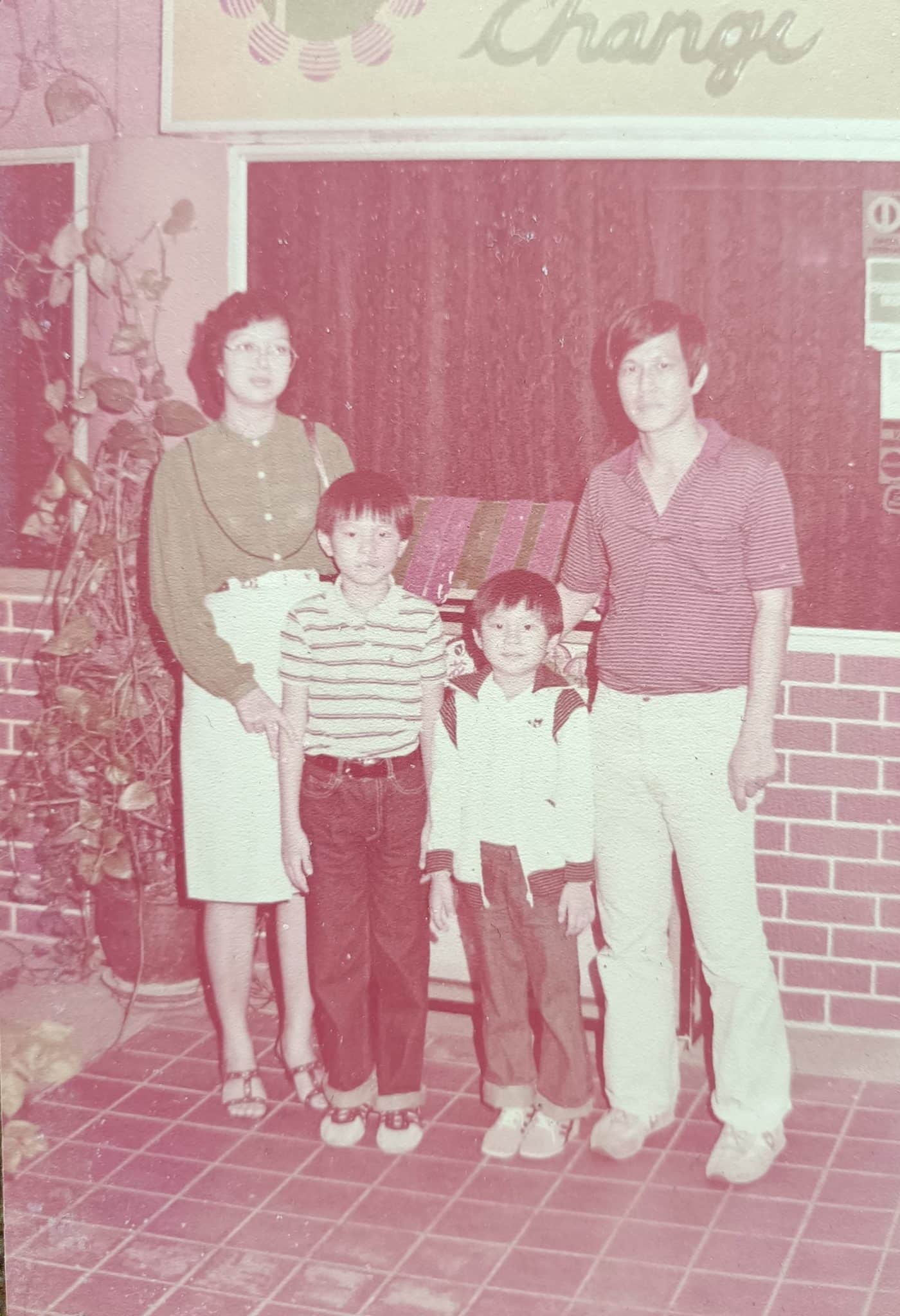
When he aced his PSLE, Timothy found his self-worth affirmed.
He was placed in one of Singapore’s top secondary schools and, for a while, everything seemed to work out. Until it did not.
He ran away from home and went to his grandparents’ flat planning to jump down from it.
“With a birthmark, I had questions about who I was. I went to a place where they told me my identity was based on my grades, my school.
“It was okay when I was achieving. But when I started to fail Physics, then Chemistry and Mathematics, I had a crisis. I became angry, angsty, moody.”
Not knowing how else to manage him, his parents sent him to a counsellor and then to a psychiatrist. He was diagnosed with acute anxiety and mild depression, and given medication to help him stabilise his mood swings.
He even had suicide ideation. Once when he was 15, he ran away from home and went to his grandparents’ flat planning to jump down from it.
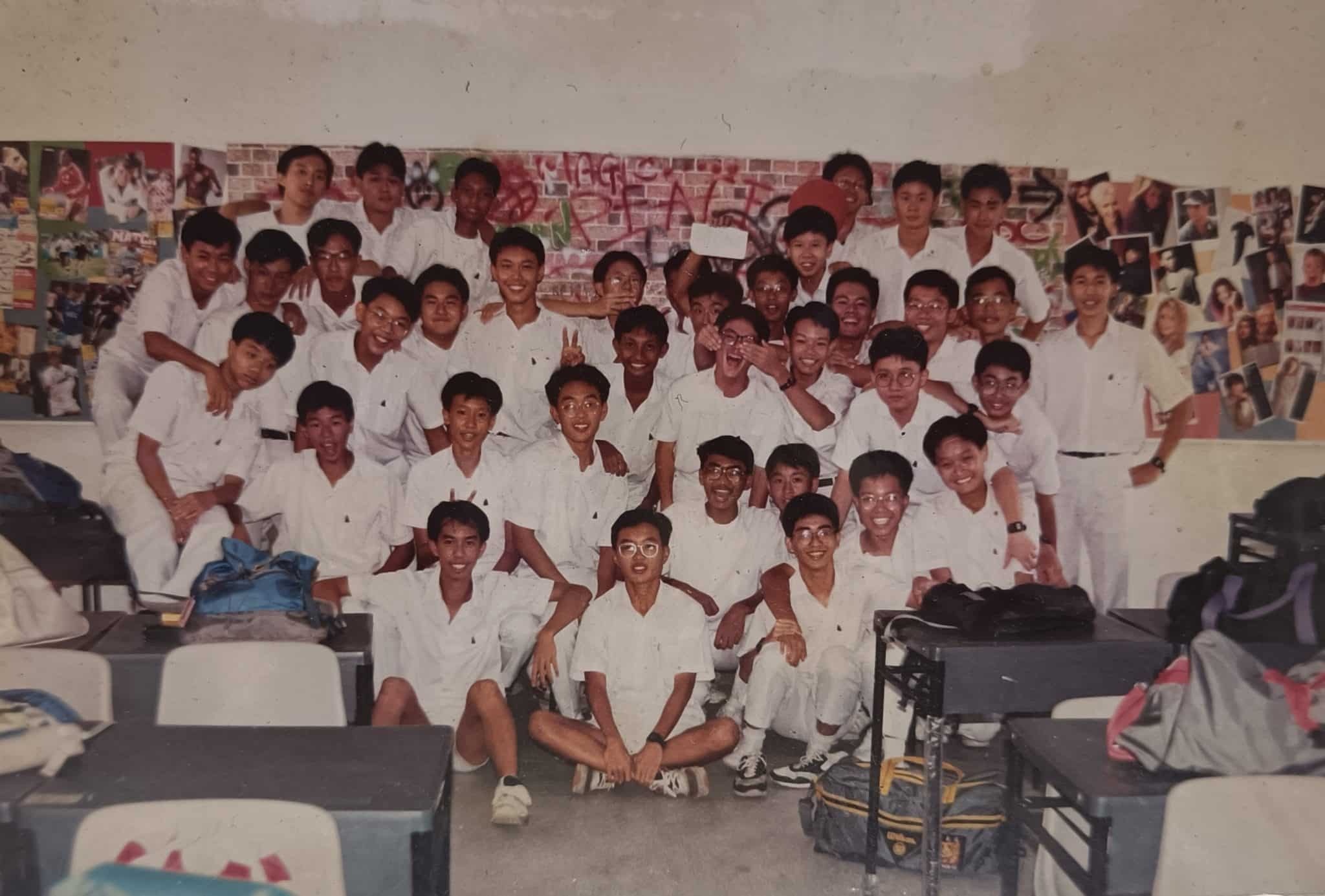
Timothy (third from right, middle row) struggled to keep up academically in secondary school, which affected how he saw himself.
“When they found me, I was thinking of doing it. But this thought came to my mind: There is more to life than this.
“That thought held me back.”
Cycle of failure
Timothy did not make it to a brand-name junior college, missing the cut-off mark by a mere one point. But he did end up in a Christian school where his classmates showed him love and concern, and helped him get over his disappointment.
“I didn’t know who I was.”
One of them took him to church. The sermon moved him.
“For most of my childhood, God was very far away to me – a God of judgement. But that day, for the first time, I understood God’s love. I became a believer.”
But the wounds to his soul because of his birthmark and perceived academic failure dogged him.
In his 20s, he turned to laser treatments to try to lighten his birthmark. But the patch of deep pink skin remained just as dark, such was the technology then.
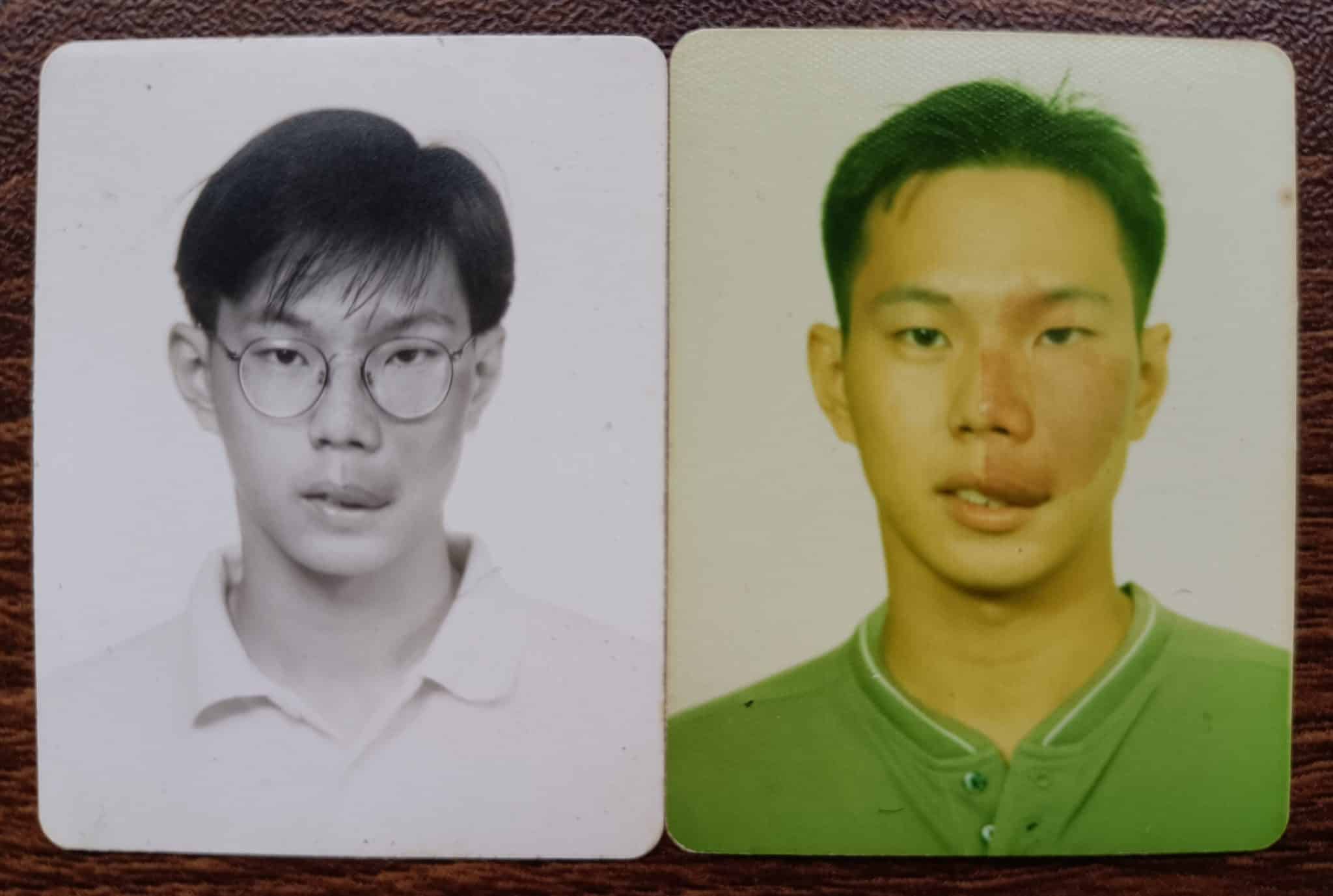
Though close friends got used to his birthmark, Timothy himself struggled with it.
A cycle of failure followed. He broke his teaching bond and his family had to help pay back what he owed. He went abroad to study but returned without a degree. At jobs in churches, he “messed up”.
“These compounded my issues with confidence and low self-esteem. I didn’t know who I was.”
The beginning of acceptance
But even as life seemed to be falling apart, God was guiding Timothy towards love and acceptance.
“I was a guy who had a lot of baggage but God used me. So I began to see God can use anyone.”
A decade ago, a pastor friend invited him to go to the streets of Singapore to pray for the underserved.
For three years, Timothy prayed for the people and saw all sorts of healing take place – back problems went away, migraines disappeared, fractures resolved themselves, legs of uneven length grew.
“I was a guy who had a lot of baggage but God used me. So I began to see God can use anyone.
“I saw healings and felt my faith rise up. I saw what I had read in the Bible come alive. If God can heal, He can help me overcome everything in my life.”
Around that time, God also revealed to Timothy the true meaning of his Chinese name.
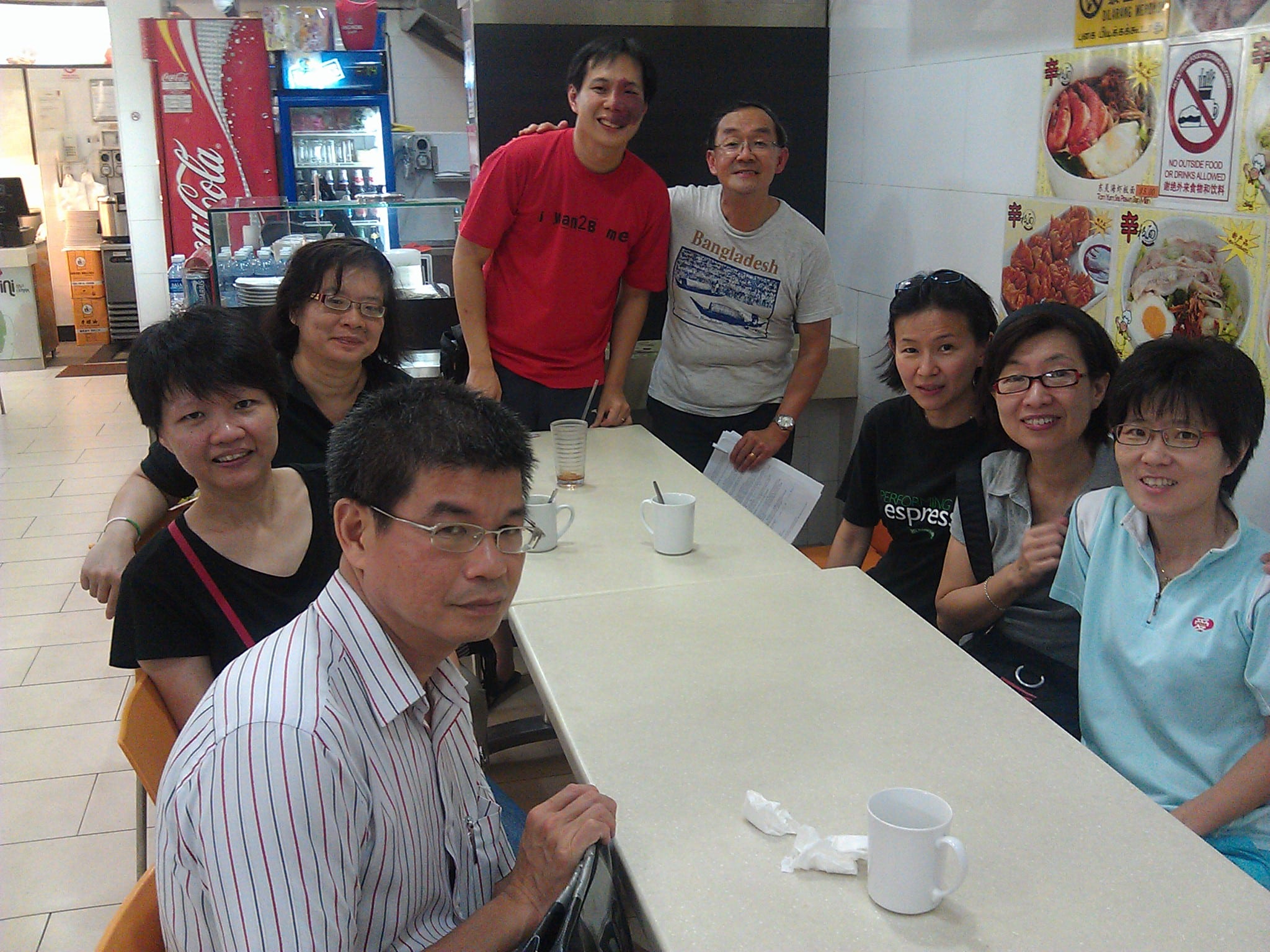
Timothy (in red) resting with ministry mates after praying for people on the streets.
“I had always been embarrassed by my Chinese name which means ‘to show how good-looking a person is’. It was chosen by my father.
“I felt God was pouring His love for me like a waterfall.”
“But God told me that my name wasn’t about showing off my good looks. It was about Him; I was to show the beauty of the King.”
There was more of God’s love demonstrated in his life. A few years ago, when he “dropped the ball” working for a church, they arranged for him to see a counsellor who helped him work through some issues.
Then Timothy joined Soakability Church.
“I began to feel the presence of God. It hit me in such a way that I began to cry.
“Instead of judgement, I felt God was pouring His love for me like a waterfall. Each time I went for service, I just fell in love with Him.
“I began to see Him as my Father and me as His son. I began to see that I had been beating myself up. It was self-inflicted trauma. And I was able to heal that way and be free to live my life without needing to perform for anybody.
Ready to face the future
But God had been at work in his life even before then.
“You gave us courage. You gave us hope because we didn’t know how he would live with a birthmark.”
About 10 years ago, Timothy was at a bus stop when a woman approached him.
She told him she had a son with a birthmark as well and wanted to talk to him about his experience growing up. Timothy met up with her and her husband.
In the years that ensued, he kept in touch with them.
When he met someone and got married, he messaged them. When his son was born, he sent them another message.
Towards the end of last year, Timothy felt prompted to begin a support group for people with birthmarks. But he let the thought sit for a while.
One day, he and his wife were out for a meal. She decided to go to a coffeeshop they had never been to before.

His wedding and the birth of his only son were milestones Timothy shared with a stranger he had met at a bus stop.
“There, we met that woman and her family. Her son was about 14 or 15 years old by now. They had lived at that block but had never gone to that coffeeshop. That day, they just felt like they had to go there!”
“I did not consider before that my birthmark also shaped my sensitivities.”
Timothy would find out that he had been an encouragement to the family all these years.
“They told me that when we met 10 years ago, they didn’t know who to approach to talk to about birthmarks because they didn’t know anyone with a birthmark.
“They said, ‘You helped us see what was important for our son. You gave us courage. You gave us hope because we didn’t know how he would live with a birthmark.’
“I didn’t know. It was really touching. I had encouraged them 10 years ago. Now they were encouraging me. We were all shedding tears.”
This year, he and the couple started a support group for people born with birthmarks. Birthmark Community Singapore is a support group for sharing experiences and knowledge, and supporting those with birthmarks in their journey.
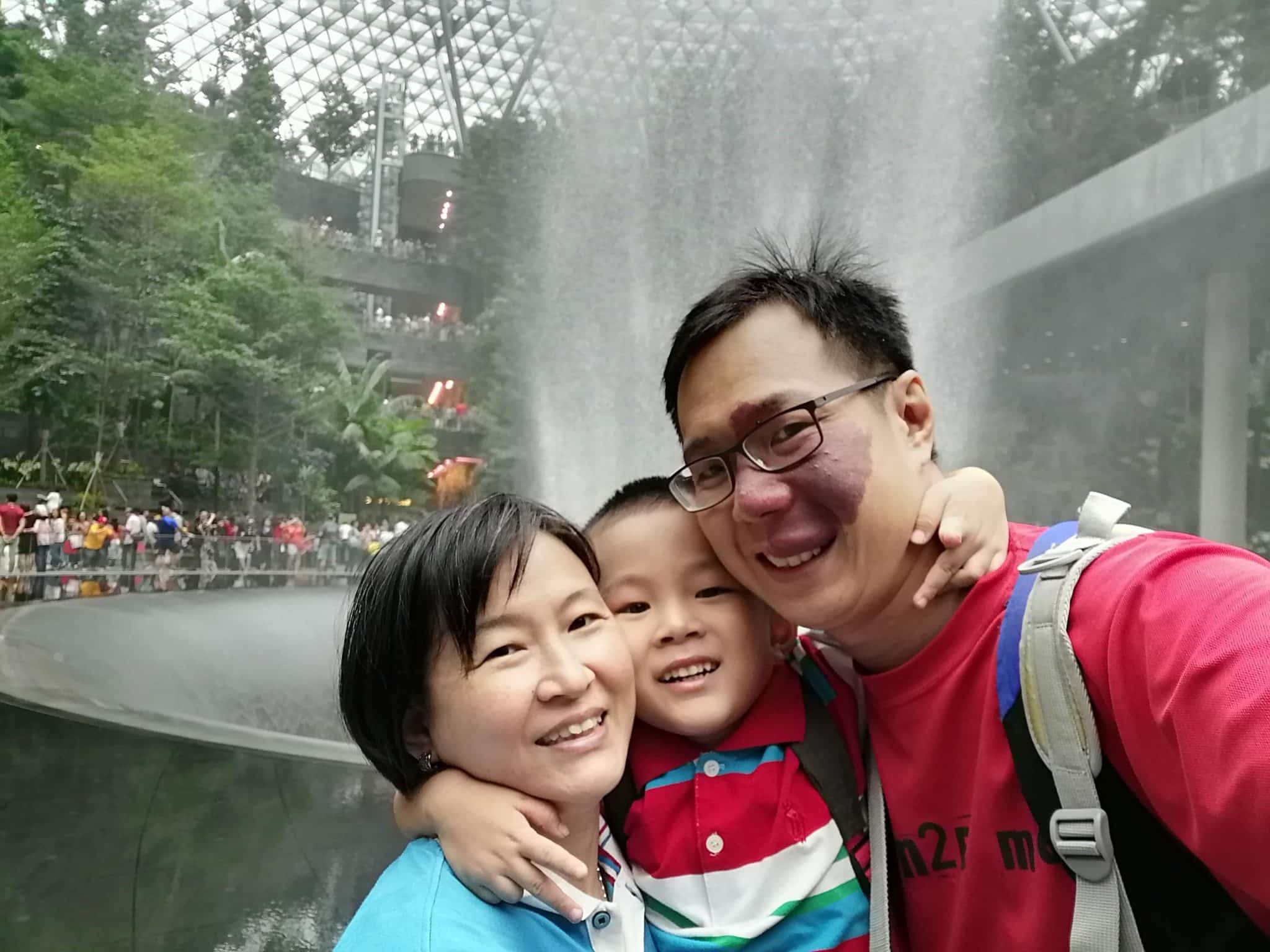
Timothy now wants to help others with facial birthmarks.
It has taken Timothy close to 40 years to come to terms with his birthmark. Now, when he looks in the mirror, he no longer notices it.
He wrote in a recent Facebook post: “I did not consider before that my birthmark, and the negative experiences with it, have also shaped my sensitivities. Also shaped an affinity for the outliers, the outcasts and the marginalised. And also shaped my cries and questions to God.”
RELATED STORIES:
In a coma and dying, she saw visions that readied her for life without limbs when she awoke
Disfigured, broken and brain damaged, but he still says it “happened for a good purpose”
“Nigel and Donavan, one day we’ll meet again,” say parents of boys in tragic Tampines accident
We are an independent, non-profit organisation that relies on the generosity of our readers, such as yourself, to continue serving the kingdom. Every dollar donated goes directly back into our editorial coverage.
Would you consider partnering with us in our kingdom work by supporting us financially, either as a one-off donation, or a recurring pledge?
Support Salt&Light
![0001[31] 2](https://saltandlight.sg/wp-content/uploads/2025/02/000131-2-scaled.jpg)

